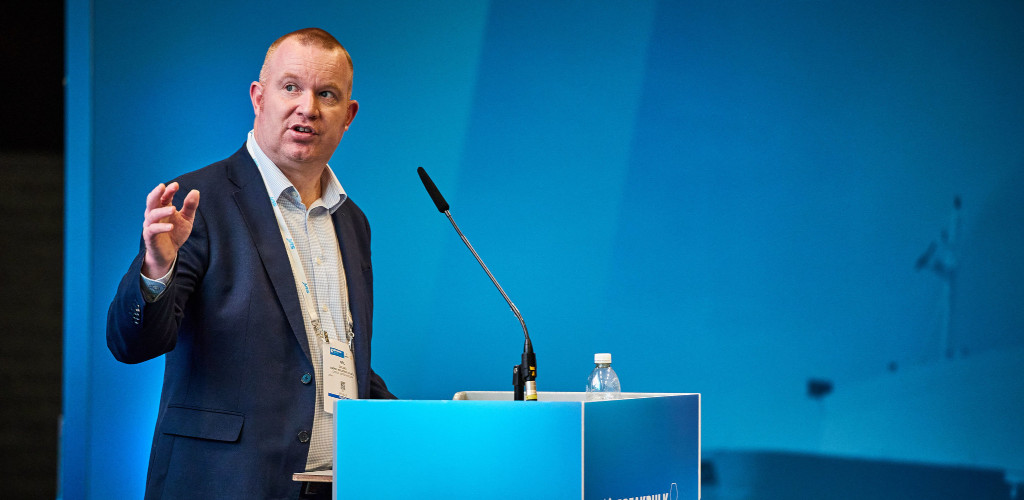May 19 | 2022
Golding Pinpoints Opportunities in Nuclear, Hydrogen, Carbon Capture

By Simon West
SAME-DAY BREAKBULK EUROPE COVERAGE: In addition to oil and gas and sustained demand for offshore wind, breakbulk and project cargo can look forward to a raft of promising cargo-carrying opportunities in other energy sectors including nuclear, given a recent boost at COP26 after members recognized its crucial role in the pathway towards net-zero.
That was a key message from Neil Golding, director of market intelligence at the Energy Industries Council, the UK’s largest energy supply chain trade association, during a breakbulk and project market outlook session at Breakbulk Europe.
“There is some really exciting technology being developed, especially with small modular reactors,” Golding told listeners. “These reactors have capacities of anything between 350 to 500 megawatts and are made up of 1,500 modules – that is a lot of modules that are going to have to be transported from factory to site.”
According to the director, some 40 projects are slated to be built in the UK alone, while a further 100 small modular reactors could potentially be installed in Canada.
“At the later end of this decade there are going to be some real sizeable opportunities,” he said.
Other opportunities lie in hydrogen, with the scaling up of electrolysers and other heavy pieces likely to require significant breakbulk support, and carbon capture, with Europe leading worldwide development.
“Capex in carbon capture projects at the moment is going to be relatively slow, about US$48 billion globally between now and 2026, but once policy, legislation and financial support is given, this is a market that will absolutely take off.”
According to Golding, 2021 saw significant growth across all energy sectors, with 2,500 capex projects added during the year, of which renewables made up more than half. For this year, renewables will constitute 61 percent of new projects that have been announced.
Some 559 gigawatts of additional offshore wind energy is expected to come online by 2030, with global capex of US$1.37 trillion. While China and the UK remain the top markets for capacity, new markets are emerging, such as the Philippines, New Zealand, Azerbaijan and Brazil.
By 2030, the number of new turbines to become operational is expected to soar to 10,000, from 2,000 this year.
Oil and gas meanwhile still have a “key role” in the energy matrix, Golding said, with an estimated US$3.6 trillion worth of expenditure in the industry over the next five years.
“We are seeing increasing activity for projects put on hold in 2020 due to Covid and are now coming back online, and projects even older, stopped mid-decade – again, coming alive due to energy security.”
“The investment levels in oil and gas over the next five years will remain high.”
Check out our interview with Neil Golding at Breakbulk Europe:
